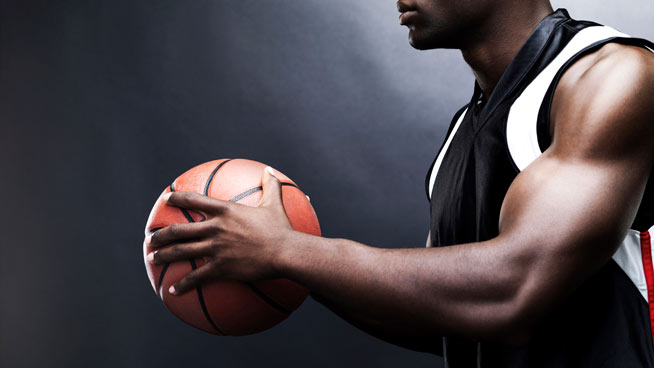Squatting Technique for Injury Prevention in Basketball Players

Proper squatting technique is essential for injury prevention in basketball, because it increases your strength and improves your flexibility and range of motion.
Let’s take a look at the two main causes of improper squatting technique and go over some exercises to correct it.
Lack of core strength
When you squat, your hips should go below parallel, with your back strong and your chest and head up. If your core strength is poor, your chest will pitch forward. To assess your core strength, perform:
Kettlebell Goblet Squats
Hold the kettlebell with both hands at chest level and squat. If the kettlebell moves out as you lower down into the squat, your chest is dropping forward and you must adjust.
Sets/Reps: 3×10
Lack of ankle mobility
Not everyone’s body and frame are conducive to a perfect squatting form. Some players need assistance to achieve the desired range of motion and depth of their squats to activate their quads efficiently.
To correct lack of ankle mobility, perform:
Heel-Elevated Squats
Elevating your heels should allow you to sit into a deeper squat and activate your quads while keeping your knees in a strong position and your torso vertical.
Sets/Reps: 3×10
Strengthening the VMO
To prevent injury, you need to maintain or build the strength of your vastus medialis (a.k.a. VMO, the inside part of your quad). A strong VMO will prevent your knee from internally rotating (collapsing inward), which is the leading mechanism for ACL injuries. When you squat, your knees should stay in line with your second toes. They should not move laterally as you lower. To strengthen your VMO, perform:
Band-Resistance Squats
Place the resistance band around the base of your knees, keeping your feet shoulder-width apart. As you squat, drive your knees out to maintain the alignment between your knees and your second toes.
Sets/Reps: 3×10
Read more:
[cf]skyword_tracking_tag[/cf]RECOMMENDED FOR YOU
Squatting Technique for Injury Prevention in Basketball Players

Proper squatting technique is essential for injury prevention in basketball, because it increases your strength and improves your flexibility and range of motion.
Let’s take a look at the two main causes of improper squatting technique and go over some exercises to correct it.
Lack of core strength
When you squat, your hips should go below parallel, with your back strong and your chest and head up. If your core strength is poor, your chest will pitch forward. To assess your core strength, perform:
Kettlebell Goblet Squats
Hold the kettlebell with both hands at chest level and squat. If the kettlebell moves out as you lower down into the squat, your chest is dropping forward and you must adjust.
Sets/Reps: 3×10
Lack of ankle mobility
Not everyone’s body and frame are conducive to a perfect squatting form. Some players need assistance to achieve the desired range of motion and depth of their squats to activate their quads efficiently.
To correct lack of ankle mobility, perform:
Heel-Elevated Squats
Elevating your heels should allow you to sit into a deeper squat and activate your quads while keeping your knees in a strong position and your torso vertical.
Sets/Reps: 3×10
Strengthening the VMO
To prevent injury, you need to maintain or build the strength of your vastus medialis (a.k.a. VMO, the inside part of your quad). A strong VMO will prevent your knee from internally rotating (collapsing inward), which is the leading mechanism for ACL injuries. When you squat, your knees should stay in line with your second toes. They should not move laterally as you lower. To strengthen your VMO, perform:
Band-Resistance Squats
Place the resistance band around the base of your knees, keeping your feet shoulder-width apart. As you squat, drive your knees out to maintain the alignment between your knees and your second toes.
Sets/Reps: 3×10
Read more:
[cf]skyword_tracking_tag[/cf]









